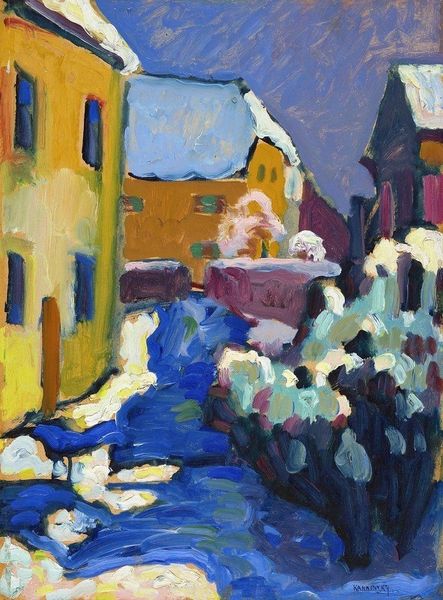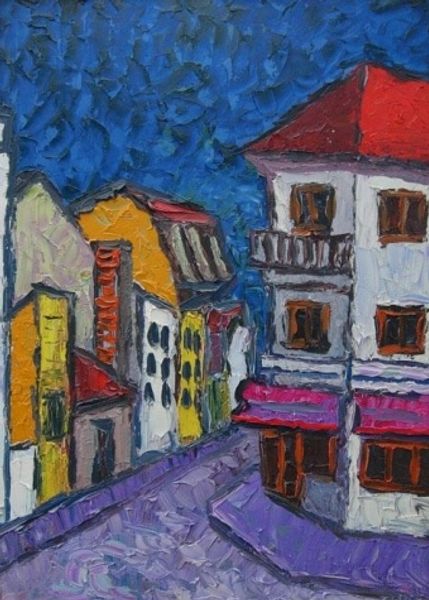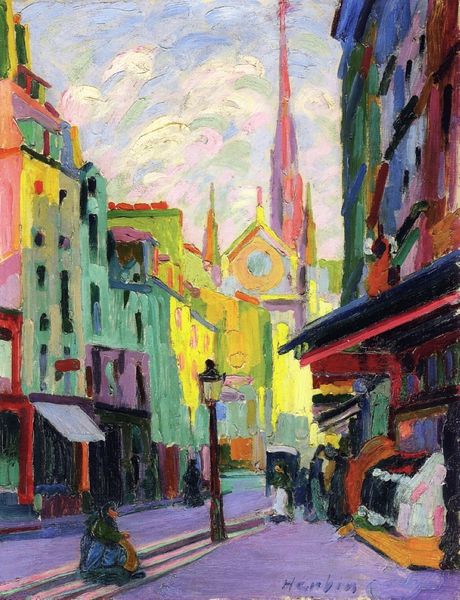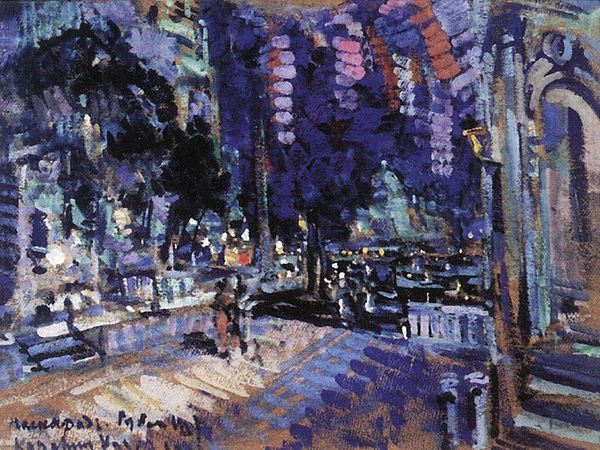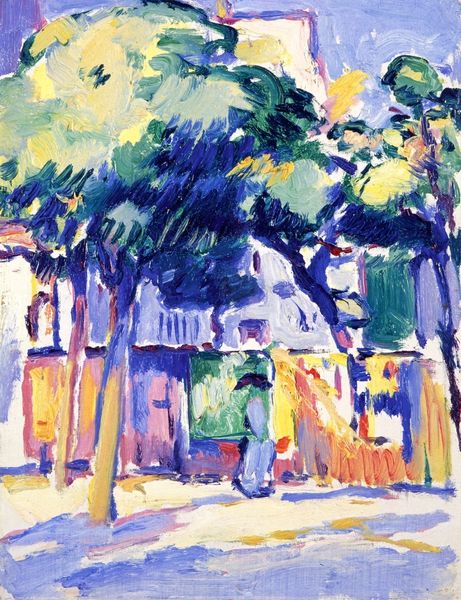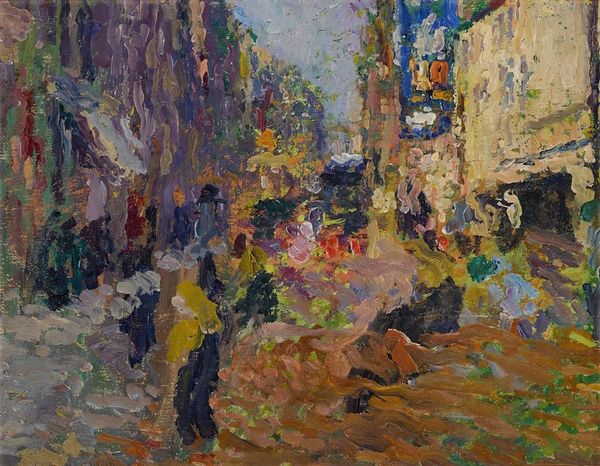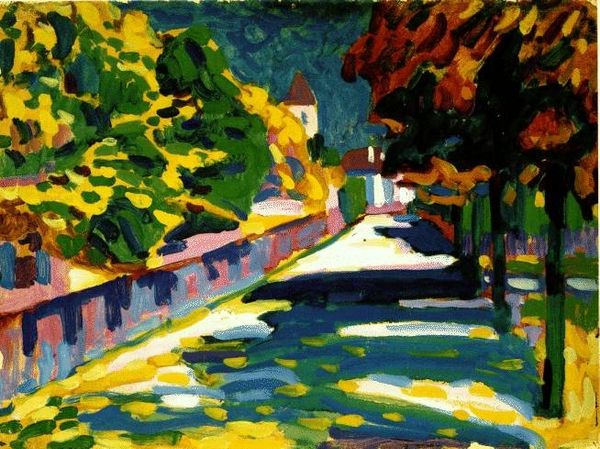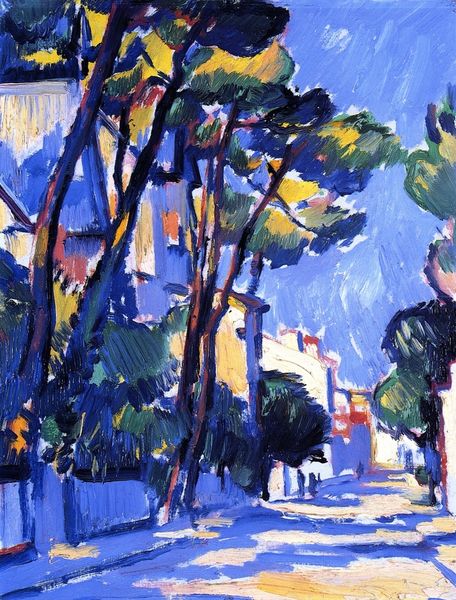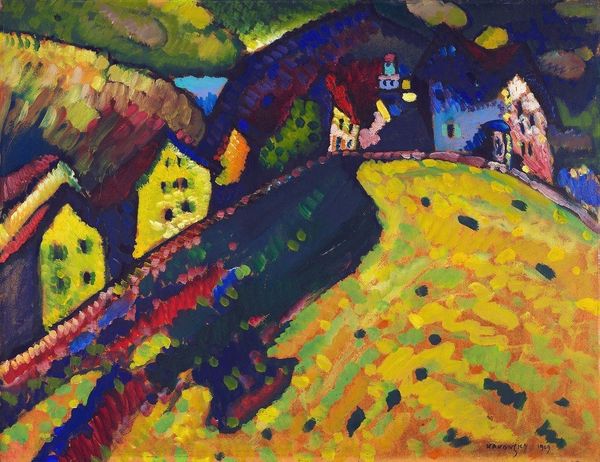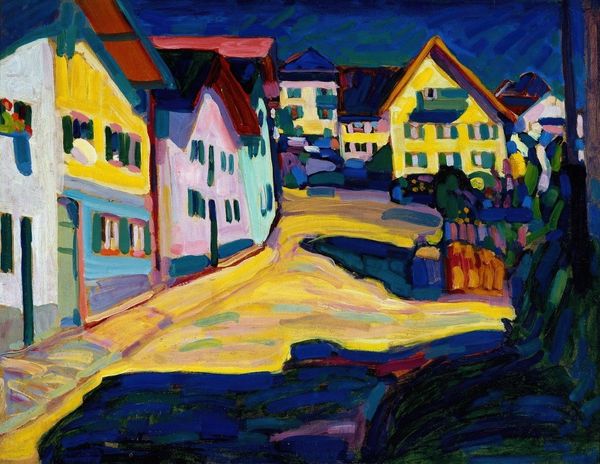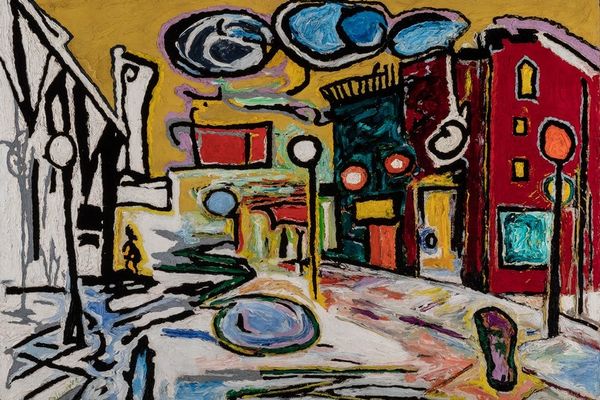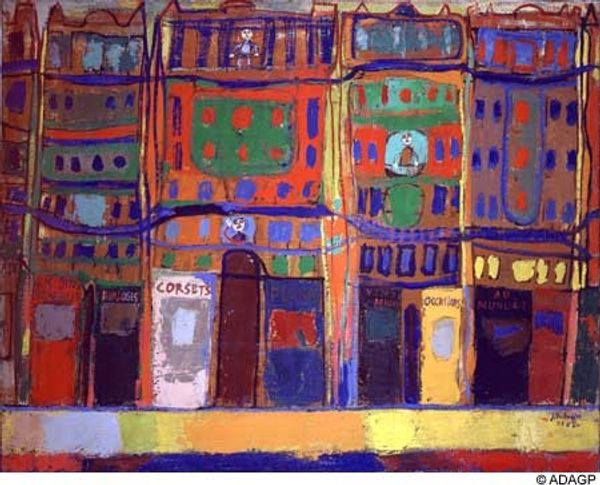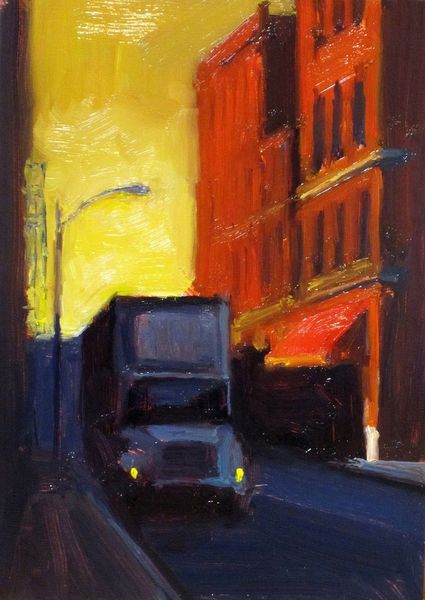
oil-paint
#
fauvism
#
fauvism
#
oil-paint
#
landscape
#
oil painting
#
expressionism
#
cityscape
#
expressionist
Copyright: Auguste Herbin,Fair Use
Curator: Before us we have Auguste Herbin’s "A Street in Bastia," painted in oil with an unknown creation date. This piece exemplifies the Fauvist movement with its daring color palette and expressionistic style. Editor: The first thing that strikes me is that incredible blue. It's such an unnatural color for a street, almost hallucinatory, yet it grounds the entire composition. Curator: Absolutely. Think about how the Fauves, including Herbin, intentionally broke away from representational color to convey emotion and subjective experience. The use of blue could be interpreted as a commentary on the alienation and anonymity inherent in urban life. Considering the era’s rapid industrialization, what emotions might this bold coloring reveal? Editor: That deep blue transforms what could be a simple cityscape into something almost mystical, referencing cultural connections of blue, like mourning. See how that central lamppost anchors the chaotic jumble of color? It suggests stability amidst the flux. It has an uncanny resonance to the high street rituals in similar communities today. Curator: You highlight an interesting juxtaposition. Though the work doesn’t have an explicit narrative, how might you perceive the relationship between the street's implied commerce and these symbolic associations of mourning? In this instance, Bastia, being a port city with all its exchange and movement, might suggest something new coming out of these emotions. Editor: The figures walking in the distance are rendered almost abstractly, as simple strokes of color. But doesn't that also strip them of identity, reduce them to anonymous participants in the urban landscape, as you pointed out earlier? This image seems so applicable to thinking about immigration and port cities as sites of movement. Curator: I agree. Herbin's bold color and flattened perspective encourage us to see the city as a social structure rather than a mere physical space. What seems on first view just a vivid depiction soon reveals layers of social critique. Editor: Looking closely, I realize how powerfully symbolic color can be. This seemingly straightforward painting is ripe with enduring relevance, considering it now!
Comments
No comments
Be the first to comment and join the conversation on the ultimate creative platform.
